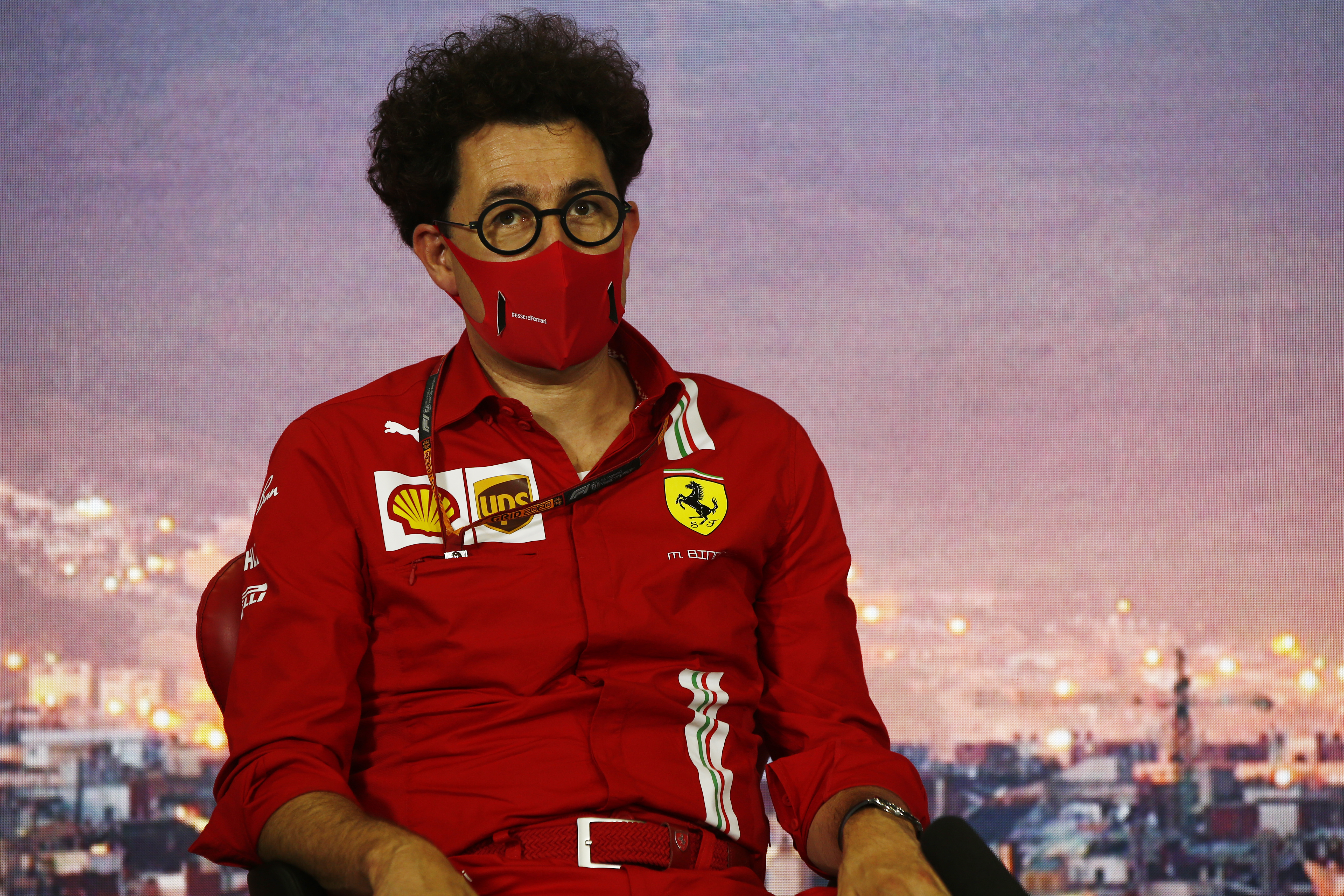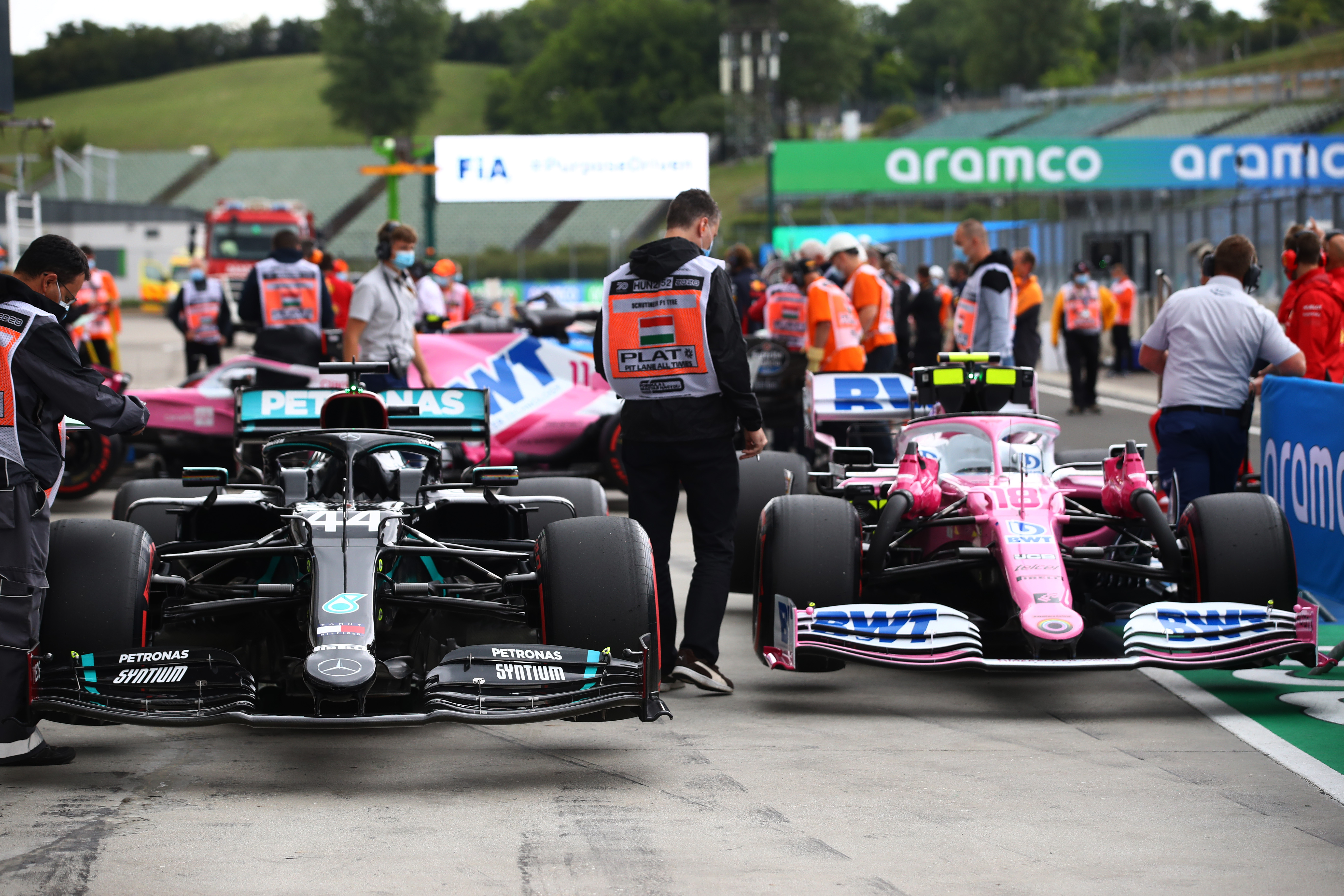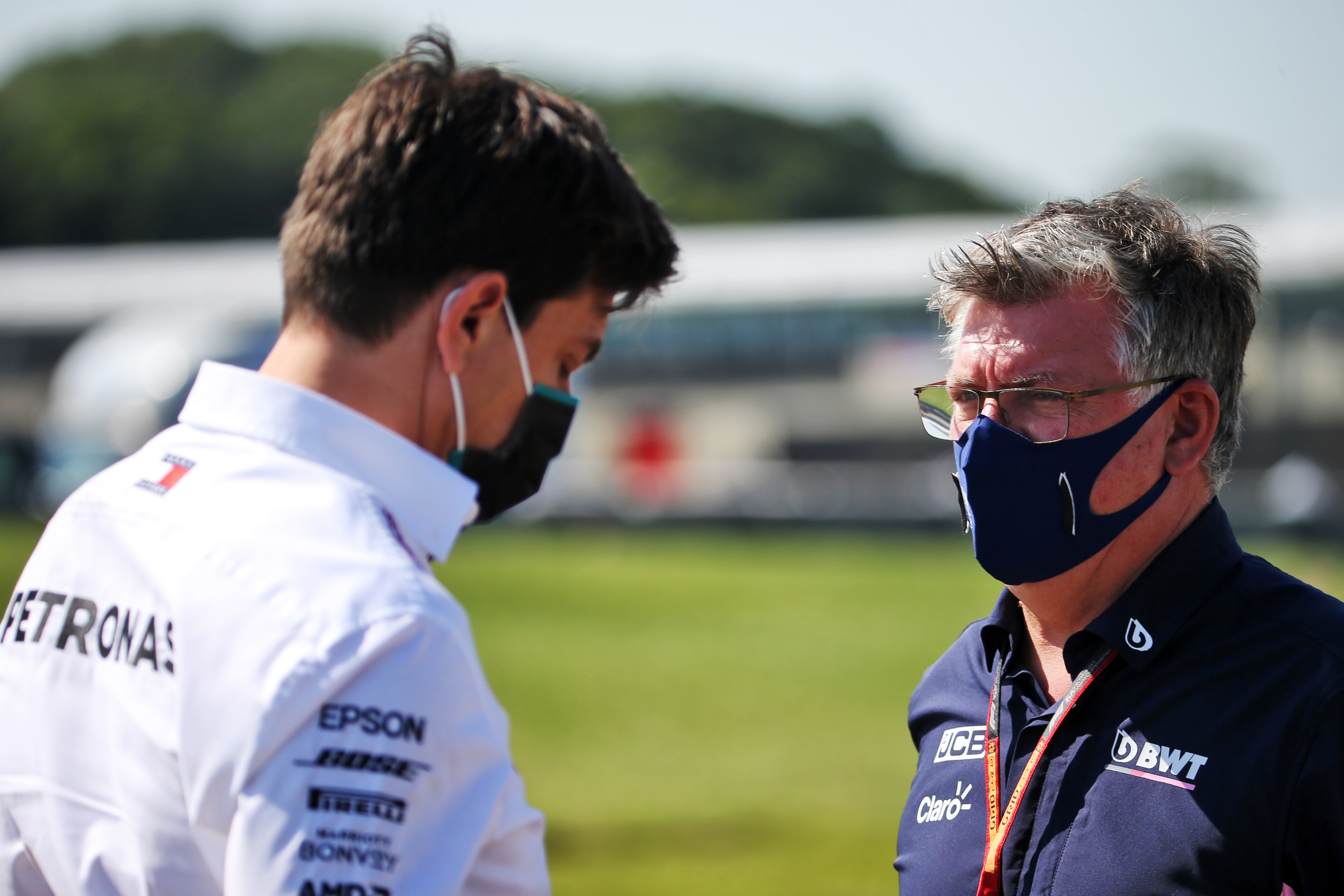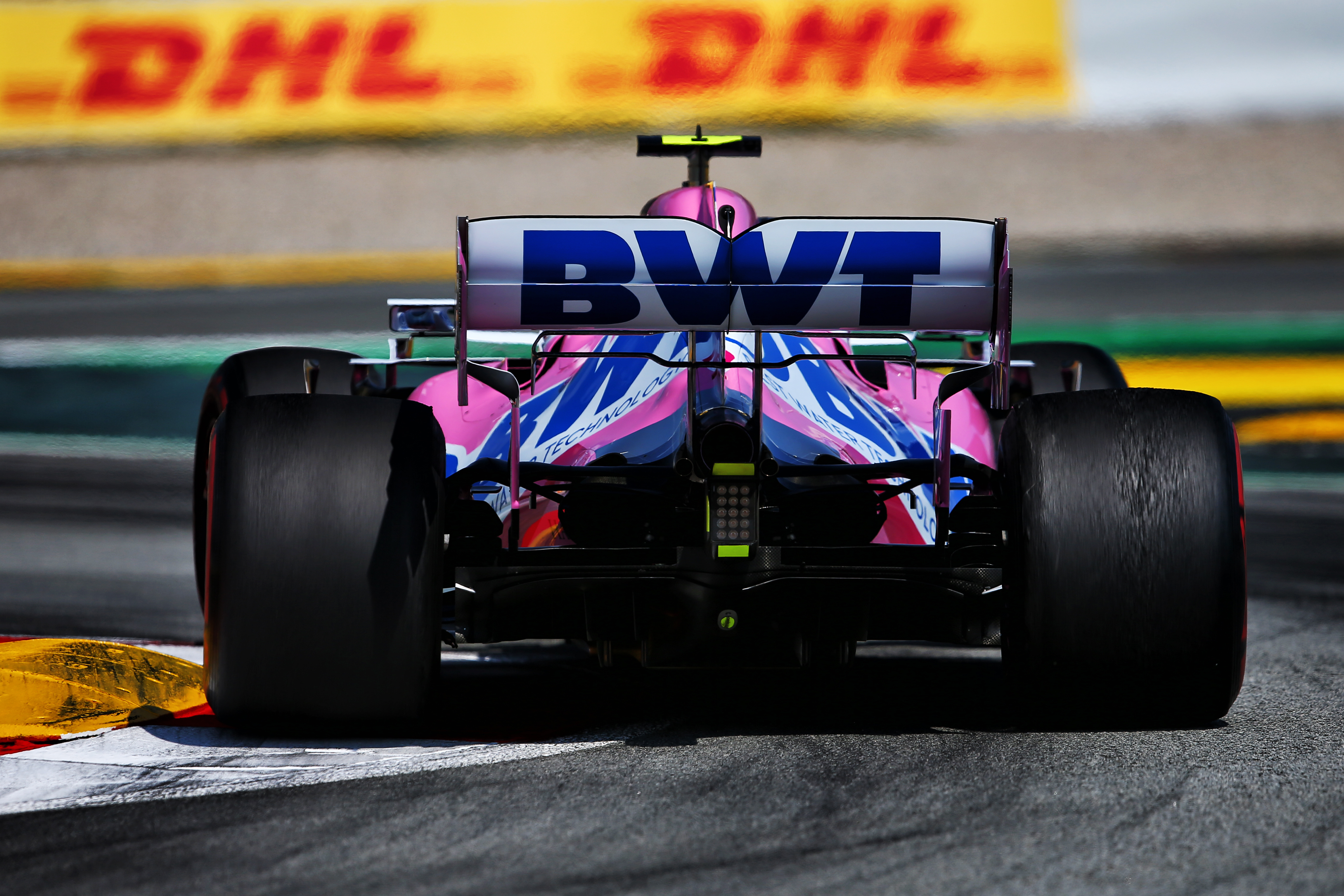Up Next

An appeal date is expected to be set shortly for the three Formula 1 teams contesting the stewards’ decision regarding Racing Point’s Mercedes-inspired brake ducts. When they go to court, a long-running saga will take a fresh twist.
This case is about a specific protest, specific components, and a specific set of circumstances. But as is widely known, there is a second element to the saga – the concern several teams have that Racing Point’s wider car concept is a copy of Mercedes’ 2019 car design.
These have so far been handled as two parallel issues. They’ve had to be because the copying angst has never manifested itself as an explicit allegation, only public gripes, whereas the brake ducts were targeted as a specific alleged rules breach.
There is now overlap between the brake ducts issue and the wider debate about whether teams can copy cars in the legal process. Two parties, Ferrari and Renault, are appealing the stewards’ decision with the intention of forcing the wider issue of the entire car to be addressed.
“That’s what we are really looking for,” said Ferrari team boss Mattia Binotto last weekend. “It’s a matter of sporting fairness, it’s a matter of protecting the IP for the future.
“If I look back in the past I can’t remember once where a team has copied precisely or most precisely an entire car.

“I think that clarity is required because I don’t think it’s good for the sport. It’s not down to me to judge and that’s why I think that the ICA will be important in that respect.”
Binotto’s view is more or less shared by Renault boss Cyril Abiteboul, who wants total clarity and binding rules that force teams to produce their own concepts, not be able to copy another’s as Racing Point has done.
He is targeting “some answers to a precedent that has been set; a disruption that has been brought into the sport”.
This is not controversial in itself. Racing Point has ruffled feathers with its so-called pink Mercedes and it is in its rivals’ interest to ensure that a similar shortcut to enhanced performance isn’t possible in the future.
However, what is creeping into the conversation is the tangential, but very serious, matter of how the other teams think Racing Point has achieved that shortcut.
The longer the unrest has continued, the more an area of doubt has crept into the public domain: Racing Point’s rivals do not believe the team has, as it claimed, copied the 2019 Mercedes through extensive, legal photography.
When it comes to a suspicion that Racing Point might have had access to more than just pictures, Ferrari has gone the furthest. Binotto has stated:
“We believe that it’s not possible to simply copy and understand the full concept behind the car.
“We believe the regulations are clear enough. We believe that there may be a breach of regulations in what is that process.”

Given the rules explicitly ban the acquisition or supply of information regarding listed parts, and the team whose design Racing Point is replication is the world champion of the past six seasons, this would be very serious.
But it remains a half-baked suggestion at best, one that throws mud at the likes of Mercedes and Racing Point without evidence or even much conviction given it has still not been acted on.
“First of all, copying the car from more than photos is something we would know,” said Mercedes team boss Toto Wolff when asked by The Race at which point such half-allegations go too far.
At Silverstone, Wolff invited rivals to protest if they seriously believed in Mercedes wrongdoing. So far, nobody has
“That’s why from my perspective it’s total nonsense to pursue that argument, and I will be defending our brand firmly if somebody were to go down that route.
“I think one can discuss the philosophy of do we want to have cars that look like other cars. And do we want to close up or tighten the regulations so these kinds of things are not possible anymore?
“That is a debate we can have with the FIA the commercial rights holder and the teams to discuss whether the regulations have been interpreted in the correct way by Racing Point, should be changed going forward or not?”

At Silverstone, Wolff invited rivals to protest if they seriously believed in Mercedes wrongdoing. So far, nobody has. Racing Point is determined to clear its name of the brake-ducts breach, but it too has avoided any formal accusation of a bigger issue.
Perhaps this will change with the ICA process, and either Renault or Ferrari will attempt to conflate wider concerns of rule-breaking with the transparency and actions of Racing Point or Mercedes.
They will require serious evidence to make that stick, assuming the ICA even considers the issue admissible when this is a case specifically referring to the brake ducts – and this matter is contained within the unique circumstances of F1’s listed parts rules.
The Race asked Binotto last weekend, following his comments that Racing Point replicating the 2019 Mercedes through photography alone would be “very difficult or likely impossible”, how he thinks Racing Point has achieved it and whether he believes there has been some kind of inappropriate collusion between Racing Point and Mercedes beyond the brake duct issue.

“Honestly, I don’t think I have the answer,” said Binotto.
“And I don’t think it’s down to myself to judge.
“The reason why we have confirmed our appeal is because we need to seek at least clarification and transparency.
“I think the brake duct is a point but I think that eventually the output and the decision of the International Court of Appeal will open up a wider and broader discussion on the copy car concept, which for us is important.
“It’s important as well for the future of Formula 1, because at the end it’s about discussing intellectual property and I think that intellectual property is an important asset of a company.
“If someone would somehow copy almost an identical car of the previous year of a competitor, I think the set of regulations should somehow protect the competitor itself and that’s why I think at the moment it’s important simply to move forward and understand.
“Clarity, transparency for the fairness of the competition and for Formula 1 for the future is important.”

That was tighter to the position of establishing rules for the future, but did not answer the question of improper collusion that has been previously hinted at.
So, whenever the ICA meets to hear this case, the wider significance may boil down to whether or not either of Ferrari or Renault intend to use this as an opportunity to allege something greater – and if so, whether or not that’s considered relevant to this particular matter, and what evidence there is to support the claim.
If the objective really is just to get the ICA to weigh in on rules governing the copying of car concepts, then it’s curious. The FIA has already pledged to change the regulations to ensure it is not possible for a team to do as Racing Point has done this season, which is what Ferrari and Renault insist is their main priority.
So what more is there to gain, other than flirting with ‘nonsense’ and trying to turn the case into something else?




